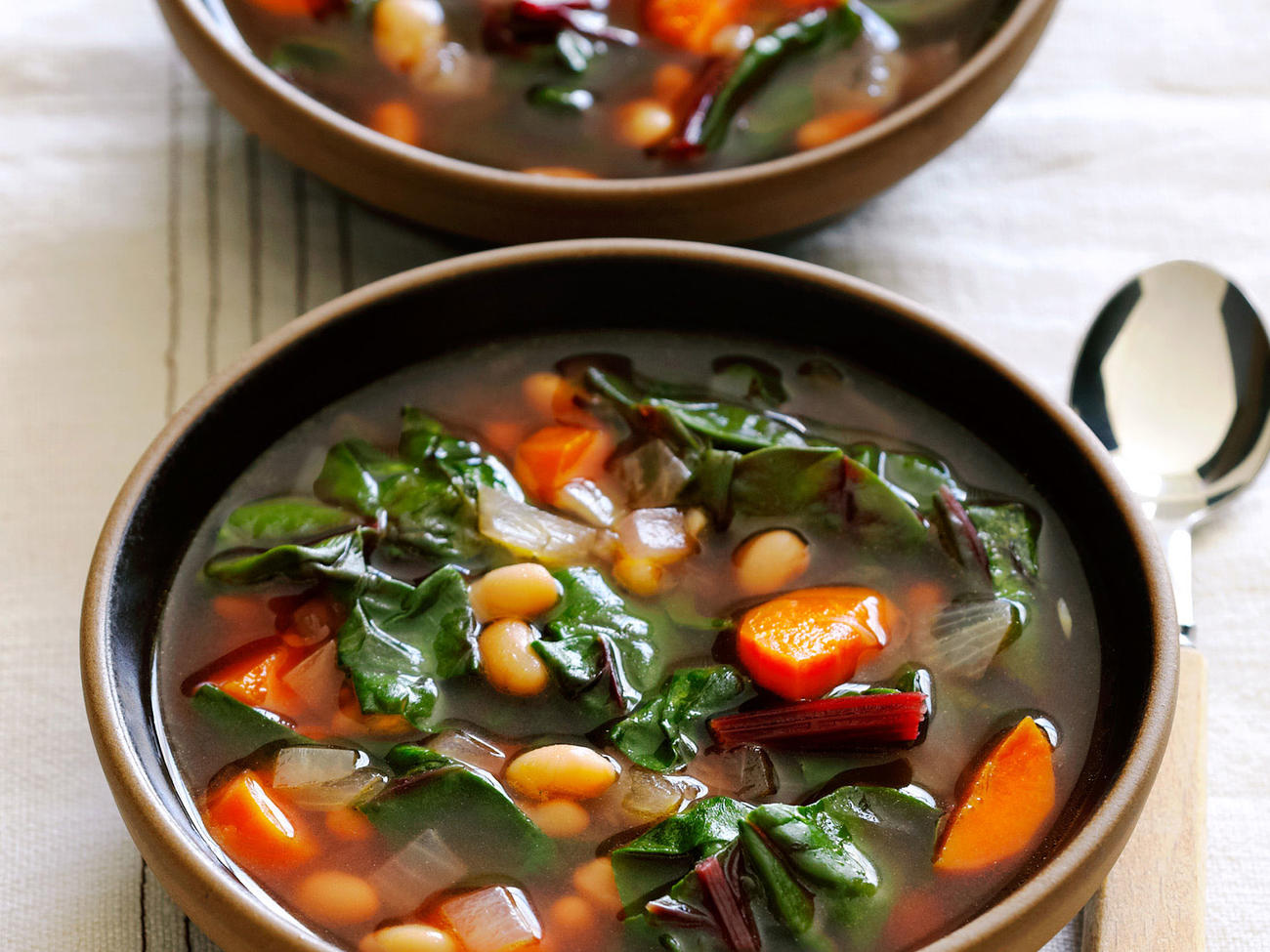
Swiss Chard Is Super Versatile: Try These Recipes While It’s in Season
Chard can be seared, sautéed, added to a scramble, or mixed into stews for added greenery and delicious flavor from late fall through winter.

Chard isn’t just a vitamin-rich leafy green in varying shades and colors (hence the rainbow chard variation). It is also a great addition to dinner or brunch dishes when you’re in need of more green at the table. At its finest state in November and into early winter, this green is about to start flourishing in gardens and appearing in bushels at grocery stores across the West. Get ready: Chard varieties lend themselves well to soups, stews, stir fry, and more.
When it comes time to preparing chard, it’s best to start by removing the leaves from the stem. Simply cut around the stem with a paring knife or run your fingers from the stalk’s base to remove the leaves uniformly. The stems can be used in any dish that the leaves make an appearance in—just chop them up as one might a mushroom stem and saute them with the greens. Chard is a wild beet relative that originated within the Mediterranean near Sicily, making it a crop that thrives in Western climates due to gentle winters.
Below, we’ve gathered recipes that showcase chard in its finest uses—as a wrap for halibut in a simple baked dinner, mixed with chanterelle mushrooms and walnuts for a perfect fall side, and blended into an easy pesto when basil becomes a little more scarce (and way less in season). Further explore cooking with chard by searing it with garlic and fatty proteins like bacon or sausage or whisked into an omelet or frittata.
As you get accustomed to the somewhat bitter green flavor and at times waxy texture of chard, you’ll see the difference in comparison to other winter greens like kale and rapini—both of which have a bit more bite and chew to them. Below you’ll find chard recipes that range from stuffing to white bean soup to help take advantage of the seasonal green.
